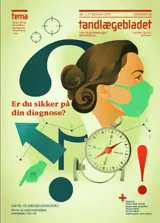Placebo – nocebo
A placebo was originally defined as an inactive medication giving a positive effect, whereas nocebo gives the opposite result. Both effects are based on expectations, of positive or negative kind. Experimental data from pain research indicate that the placebo responses are caused by stimulation of endogenous opioids and release of endogenous dopamine inhibiting receptors for pain and discomfort in the central nervous system – or eliciting wellbeing. By contrast, a nocebo may lead to deactivation of the opiod/dopamine mechanisms or may increase the pain perception by way of the nerve transmitter substance cholecystokinin. At the same time anxiety and negative expectations may cause nocebo related increased activity of stress related hormones and affect the endocrine and immune system. The placebo response is now considered as a contributory factor in traditional medical treatment and is proposed as an explanation for positive effects associated with alternative medicine. Nocebo responses may follow events such as media discussions on allegedly toxic environmental factors. In the dental clinic placebo effects have been noticed in cases of treatment of the myofascial pain syndrome. Nocebo responses may be responsible for the notion of being poisoned by mercury from dental amalgam or fearing dental treatment after earlier traumatizing experiences in the dental surgery. It is generally accepted that the quality of patient communication, rituals and treatment surroundings are of importance to the placebo/nocebo response.


